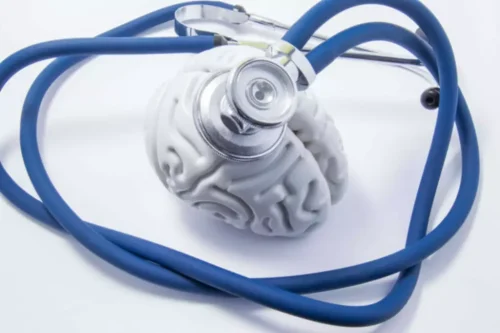
This app provides information about the health effects of performance enhancing drugs (doping) through an interactive virtual reality style experience. The relationship of mental health to substance abuse and addiction is close, and it may or may not be causal. Abusing drugs generally makes symptoms of mental illness worse, while the symptoms of mental illness increase the chances that an athlete will turn to substance abuse to self-medicate. Proper treatment is the only way to divert an athlete from a path of addiction that will ruin their career and their life.
The Effects of Drugs on Athletic Performance
In this review, an attempt will be made to explore the literature related to some of the most common substances of abuse with an emphasis on alcohol, opioids, nicotine, cocaine and marijuana. There is limited information in relation to treatment of addiction in athletes which will be a primary focus of this paper. Most of the discussion will focus on approaches in the general public with an attempt to project this information onto the athletic population in these cases. One must remember that substance use in athletes may be correlative with traditional uses but may also primarily involve using substances with the intention of improving athletic performance or masking banned substances, known as doping. Over the past 45 years, great progress has been made regarding anti-doping policies but yet it continues to play a role at all levels of sporting competition.
- Finally, researchers could consider exploring strategies for targeting/tailoring existing interventions to be more efficacious specifically among athletes.
- Rates of performance-enhancing drug use may be higher among elite athletes, where the stakes and incentives for optimal performance are quite high.
- Most of the available literature primarily looks at substance use in adolescent and college athletes with more emphasis on alcohol predominately and is limited in relation to treatment modalities.
Educate Yourself on Addiction
If an athlete is not competing with someone else, they are competing with who they were yesterday, striving to do better, to be better. And the pressure to improve is not merely internal; from coaches to parents to fans, it seems that everyone around athletes pushes them to do more and be more. He argues that the best way to combat PED use also involves drug use in sports having an independent agency such as USADA take over the policy, instead of having the policy set by the league and players’ union. But that likely won’t happen for one reason – The NFL would be giving up control. To its credit, the NFL historically has been ahead of the curve in trying to address this issue among American pro sports leagues.
- This is a trend mirrored in sport doping research that focuses heavily on motives and prevention at the individual level.
- The International Amateur Athletic Federation, now World Athletics, was the first international governing body of sport to take the situation seriously.
- Considering these promising findings, as well as the overall support for different types of environmental interventions in other populations, athletic organizations should consider contextual strategies designed to limit alcohol and other drug use.
- The prevalence of doping is unclear, though there is a significant gap between prevalence estimated by researchers and the official testing results.
Private college’s registration cancelled over alleged links to international student visa scam
Several meta-analyses have shown that brief (1–2 sessions) in-person interventions are effective at reducing at-risk alcohol and drug use (Burke, Arkowitz, & Menchola, 2003; Jensen et al., 2011; Lundahl, Kunz, Brownell, Tollefson, & Burke, 2010). Further, interventions that provide personalized feedback in the absence of individual clinician contact have also been shown to be efficacious at impacting substance use (Miller et al., 2013). A handful of studies have examined the efficacy of motivational enhancing interventions specifically among athletes, with promising results. For example, in one study, Martens and colleagues (2010) found that a personalized feedback-only intervention was effective among a sample of college athletes at reducing peak blood alcohol concentration.
- Several research studies have shown that transitioning from in- to off-season serves as a risk factor for heavy drinking among athletes.
- In athletes, a few studies looked at spit tobacco use by implementing dental exams with subsequent counseling by the dental technician if screening for nicotine use was positive.
- At the adolescent and collegiate level, successful athletes may find that they are regularly invited to social gatherings where alcohol or other drugs are provided.
- Enter your information to learn about our advertising options and get in contact with our development team.
- There appears a need for more rigorous high-quality studies looking at direct head-to-head comparisons between athletes and non-athletes in the field of addiction with an emphasis on treatments.
US sprinter Sha’Carri Richardson banned after testing positive to cannabis, will miss Olympic 100m
Collegiate student-athletes drink more drinks per week [6,7], drink more frequently, consume larger amounts often in correlation with level of athletic involvement [4,8,9,10], and are more likely to drink for social reasons [4,8,11,12]. Involvement in athletics appears to be inversely related to cigarette smoking and illicit drug use [13,14]. In adolescent and young adult https://ecosoberhouse.com/ athletes, a systematic review found 82% of included studies showing a positive relationship between alcohol use and sports participation and 50% of studies found negative association between participation in sports and marijuana use [14]. Another systematic review indicated higher levels of alcohol use and violence in the athletic population compared to non-athletes [15].

This is due to side effects such as dehydration, heatstroke, and nervousness. Individuals who abuse anabolic steroids at some point during their life are more likely to turn to other drugs. One study looked at individuals admitted to an inpatient treatment facility for opioid addictions.


But there’s no proof that creatine helps you do better at sports that make you breathe at a higher rate and raise your heart rate, called aerobic sports. In 2020, the state had the highest rate in the nation for the number of infants screened for prenatal substance exposure. That year, Child Protective Services screened 712 infants for drug exposure compared to California — a state with a substantially larger population — which screened 526. CHARLESTON — West Virginia’s substance use disorder crisis was put into sobering perspective for lawmakers this week. Photo Courtesy/WV Legislative PhotographyJeremiah Samples, a senior adviser to the Joint Committee on Government and Finance, told lawmakers Monday that West Virginia needs to do a better job at tracking substance use disorder outcomes. As of May 12, 2021, no baseball player who has been publicly accused of using PEDs has been allowed entry into the National Baseball Hall of Fame.

Athletes Suffering in Silence







